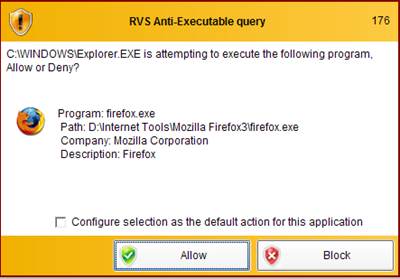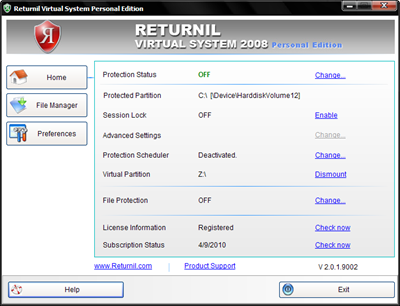Did you ever wish there was an undo button on your PC so that if you mess up something you could just press it and everything returns back to normal? Yes, there is, it’s called Returnil Virtual System.
Returnil Virtual System is a virtualization technology that protects the computer from unwanted changes made by unauthorized persons or malware by caching all changes made to the system on a virtual storage disk instead of the actual partition. When the protection is turned on, the user operates the system in a virtual environment, so anything that is done on the system happens in the virtual environment, not in the real PC. If the computer gets infected with Malware, all that needs to be done is simply reboot the PC to erase all changes. Once restarted, the system is restored to the original state, as if nothing ever happened.
Whenever you need protection just turn on Session Lock to enter the virtual environment. In this mode you are free to try out any software or make any changes without fear of causing damage to the system. When the Virtual System Protection is OFF, the system accepts all changes so you can install or remove programs, save documents alter configurations and so on.
Returnil Virtual System installs several additional tools of which two noteworthy are the Anti-Execute and Real System Auto-Run control. The Anti-Execute is like a firewall for programs. Just like a firewall prevents data from flowing in and out of the computer unless the user permits it, the Anti-Execute tool prevents running of programs until the user allows it, providing additional level of protection. Just like firewall you can set rules for each application and Anti-Execute won’t ask you again.

The other useful tool, the Real System Auto-Run control allows you to control which application will auto start during Windows booting. Similar to the Msconfig tool of Windows but provides more information on each auto run application.
Returnil Virtual System is advantageous than conventional virtualization techniques where an entire machine has to be created on top of another operating system to keep software and changes isolated from the host system. RVS gives you the luxury of trying out new tools and carrying out experiments on your actual OS without the fear of causing adverse changes to the system.
Returnil Virtual System is available as a free tool as well as in a paid commercial version.


Comments
Post a Comment